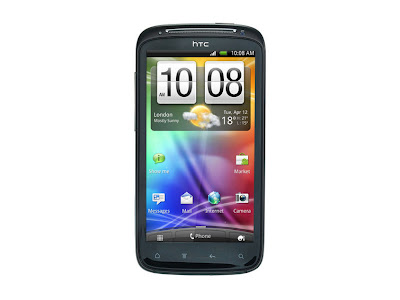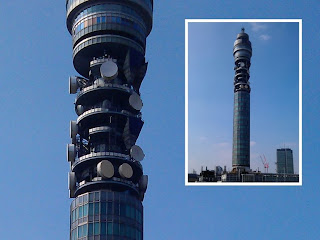Verdict
A well-built Android phone with plenty of power and a slick UI, but it just isn’t as good as the Samsung Galaxy S II in the vital areas
HTC isn’t shy when it comes to naming its phones, with the Hero, Desire, Legend and Incredible now joined by the equally bombastic Sensation. This confidence works when the phone displays a level of quality to match the name, but the Samsung Galaxy S II has raised the bar for Android phones. HTC’s new flagship has some serious catching up to do.
The Sensation gets off to a good start, partnering Android 2.3 with the Sense 3 interface, as seen on HTC’s Flyer tablet. The most obvious enhancement is an overhaul to the lock screen: gone is the swiping bar, replaced by a metal-effect ring that peeks out from the bottom of the screen. Pull the ring upwards and the phone unlocks with a slick, spinning animation.
Sense 3
There's space for four user-defined app icons on the lock screen, and dragging one into the ring will unlock the phone directly into the app. The lock screen now supports widgets, too, with Friend Stream, weather information, basic music controls and several others available. Alas, they can’t be dragged for direct opening in the same way.
Other changes are subtle. Scrolling between home screens uses a 3D animation, the Connected Media app allows for DLNA connectivity, and the notification bar shows memory usage and can kill persistent apps.
The rest remains the same, which means some widgets and apps are beginning to look a little long in the tooth. Friend Stream and Peep have barely changed from previous incarnations, and they’re best replaced by alternatives from the Android Market. And the Galaxy S II outstrips the Sensation in some areas, particularly its Kies Air wireless syncing tool.
Screen
The other obvious difference is the screen. The Sensation’s 4.3in diagonal is the same as the Samsung, but with a sharper 540 x 960 resolution. The 16:9 aspect ratio is better for media than the 15:9 screen of the Samsung, as images don't need to be resized to fit the panel, but it makes for awkward stretching in apps designed for standard 480 x 800 screens.
The increased resolution makes text, images and icons wonderfully sharp, and the sheer brightness of the LCD makes a big impact: on a plain white screen we measured a maximum 399cd/m2, behind only the iPhone 4 out of today’s frontrunners.
This isn’t the whole story, though. It’s an LCD panel, so it can’t match the zero black level of the Samsung’s Super AMOLED marvel. We measured a black screen at 0.75cd/m2, making for a disappointing contrast ratio and, crucially, poor colour reproduction. Its tone is pale and pallid, and lacks depth when put next to the many better smartphone screens we’ve seen recently. Bright shades blend together and deeper blacks look like mere shades of grey, and we’d go so far as to say even the £100 cheaper LG Optimus 2X is easier on the eye.
Design
There’s little to shout about when it comes to the styling, either. As usual for an HTC handset it feels rock-solid, but its looks are more familiar than fancy. The rear is all dull grey and brown, and only slight curves at the top and bottom mark the Sensation out from the square-jawed Desire HD.
Samsung claimed the 8.7mm Galaxy S II to be the slimmest smartphone around, and the Sensation can’t compete. It bulges to 11mm around the middle and weighs 148g to the Samsung's 116g – but it still feels comfortable in the palm thanks to its matte finish and curved body.
The layout is much the same as the Incredible S, which means a light sensor and camera at the top of the front face, with a 3.5mm headphone jack above. The micro-USB port sits on the left edge with the volume rocker, and Android's four touch-sensitive buttons remain at the bottom of the screen.
We’re not keen on the rear cover. Instead of hiding the SIM and battery behind easily removable flaps, on the Sensation you have to remove the entire rear of the phone. It isn’t an easy process, but at least the case feels stronger than the Samsung's plasticky shell.
Performance and battery life
HTC’s first dual-core phone uses Qualcomm’s MSM 8260 processor and 768MB of RAM. As with the Samsung’s Cortex A9 it runs at 1.2GHz, and here it’s partnered with Qualcomm’s Adreno 220 GPU instead of the ARM-produced Mali-400MP chip used by Samsung.
Real-world performance was excellent. The increased range of graphical effects didn’t tax the processor or GPU, with homescreen switches and the eye-catching lock-screen effects running flawlessly. Demanding 3D games such as Reckless Racing Play and Raging Thunder ran without any slowdown, and web browsing – aided by Flash 10.3 support – was similarly slick.
Our benchmarks, however, suggest the Sensation isn’t quite as strong as the Galaxy S II. The HTC completed the SunSpider benchmark in just over six seconds – twice as long as the Samsung – and its score of 1,911 in the Quadrant benchmark, while faster than most, pales next to the Samsung’s 3,460. It also took the Sensation 5.6 seconds to load the BBC’s homepage, with the Galaxy taking only four. It’s fast, then, but it isn’t the fastest.
The 1,520mAh battery fared better, with 50% left after our usual 24-hour rundown test. That’s around normal for the dual-core phones we’ve seen, even if it does fall behind most single-core rivals.
Camera
The Sensation has a strong camera on paper: 8mp stills and 1080p video recording at 30fps, alongside options such as ISO adjustment, autofocus and self-timing. In our tests it proved itself to be a respectable performer, taking nicely detailed shots in all lighting conditions – it‘s certainly the match of the iPhone 4, among others.
However, it isn’t up there with the magnificent camera on the Galaxy S II. There’s no macro mode, so close-up pictures were a little blurry, and our test snaps looked washed out and pale. And video showed a lack of sharp detail, even at Full HD.
HTC packages the Sensation with an 8GB microSD card for your photos and apps, which partly compensates for the mere 1GB of onboard flash memory. The Samsung, by contrast, has 16GB.
Verdict
All told, the Sensation does its very best but fails to live up to either its lofty name or the standard set by the competition. Our main stumbling block is the screen, which literally pales in comparison to the vivid Samsung, but the HTC is also a mite slower and has a lesser camera.
When the two can be had for pretty much the same price – £25 a month on a 24-month Vodafone contract – it’s difficult to find a valid reason why we’d opt for the HTC Sensation. If you’re spending that much on a dual-core Android device you might as well get the best, and that’s still the Samsung Galaxy S II.




Conversion Conversion Emoticon Emoticon